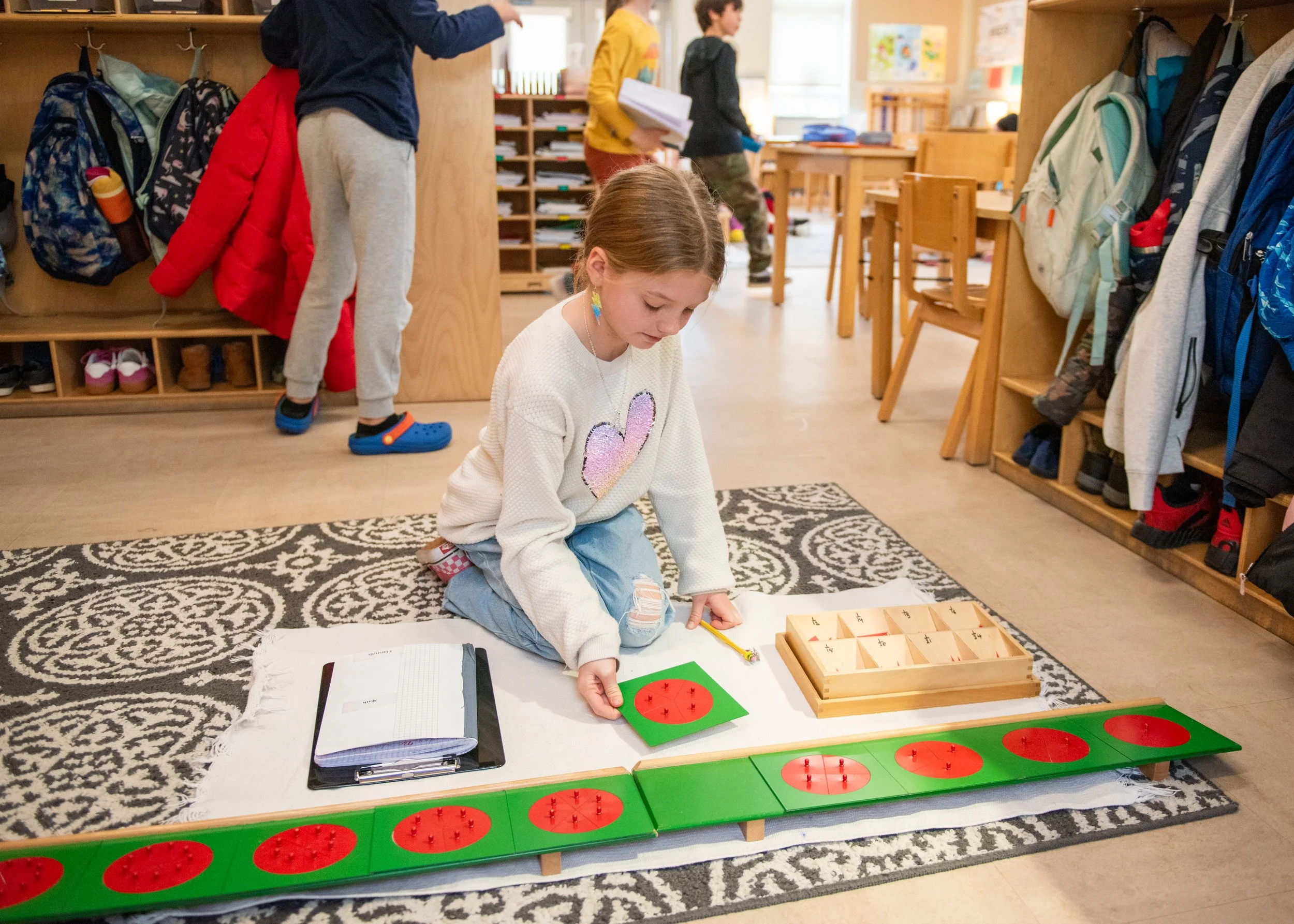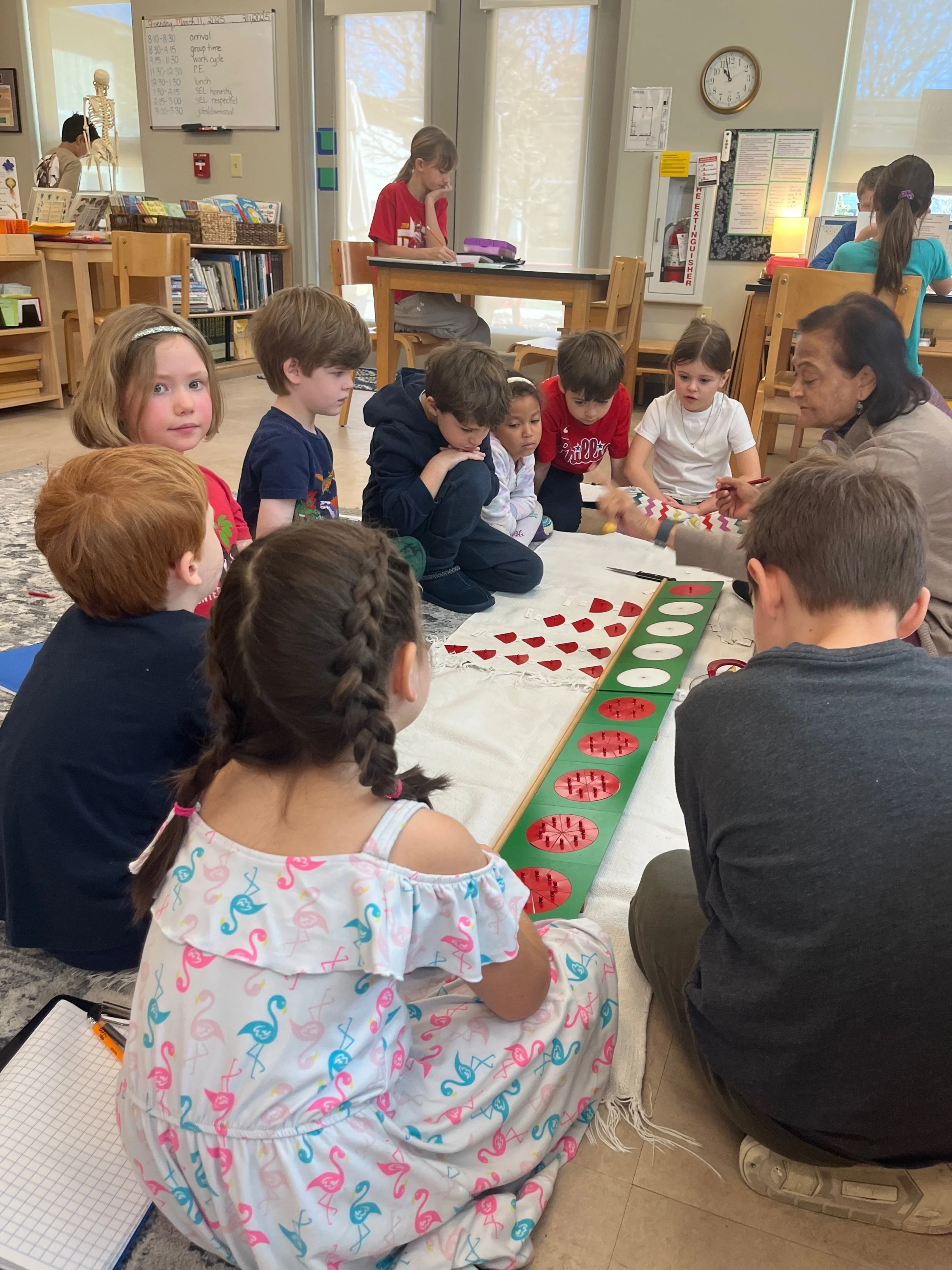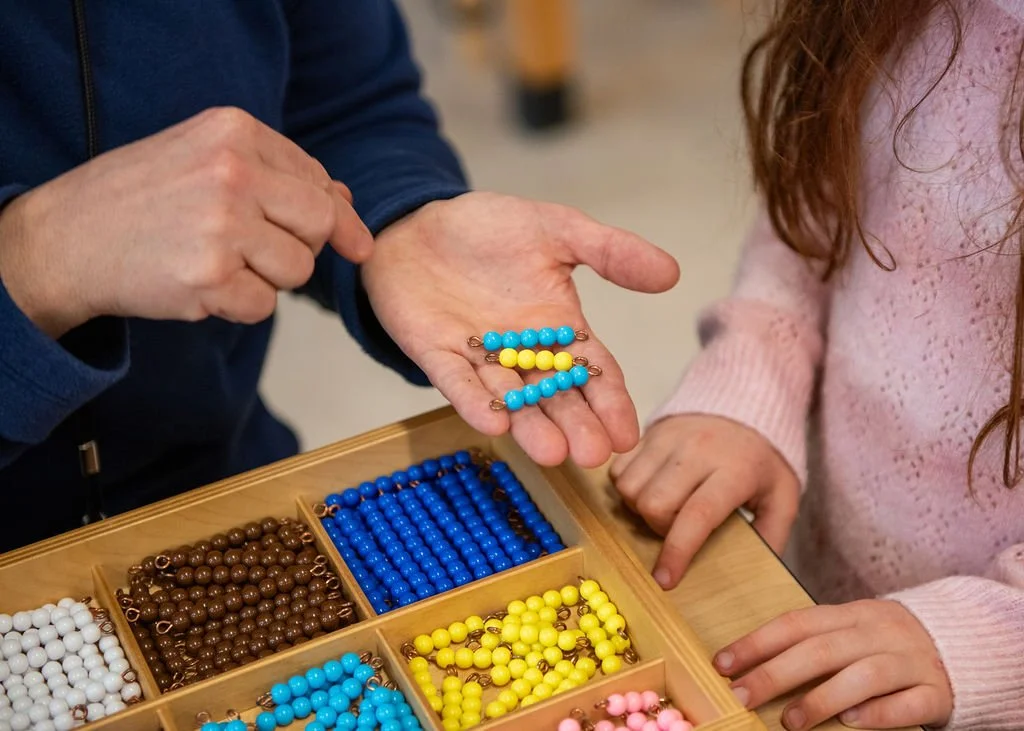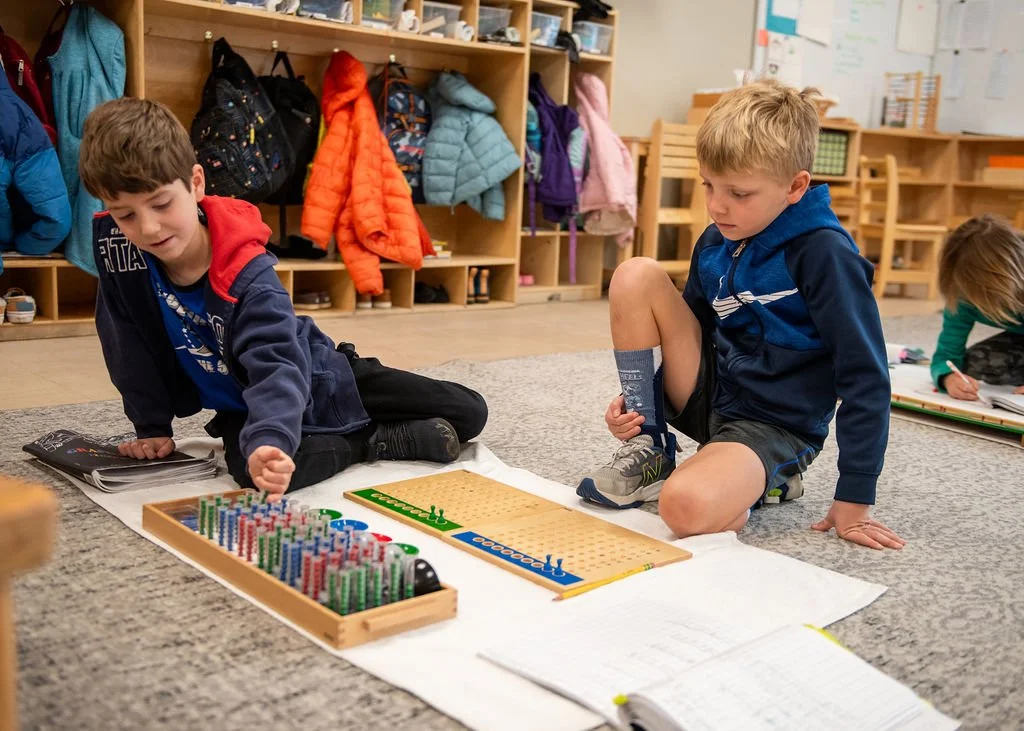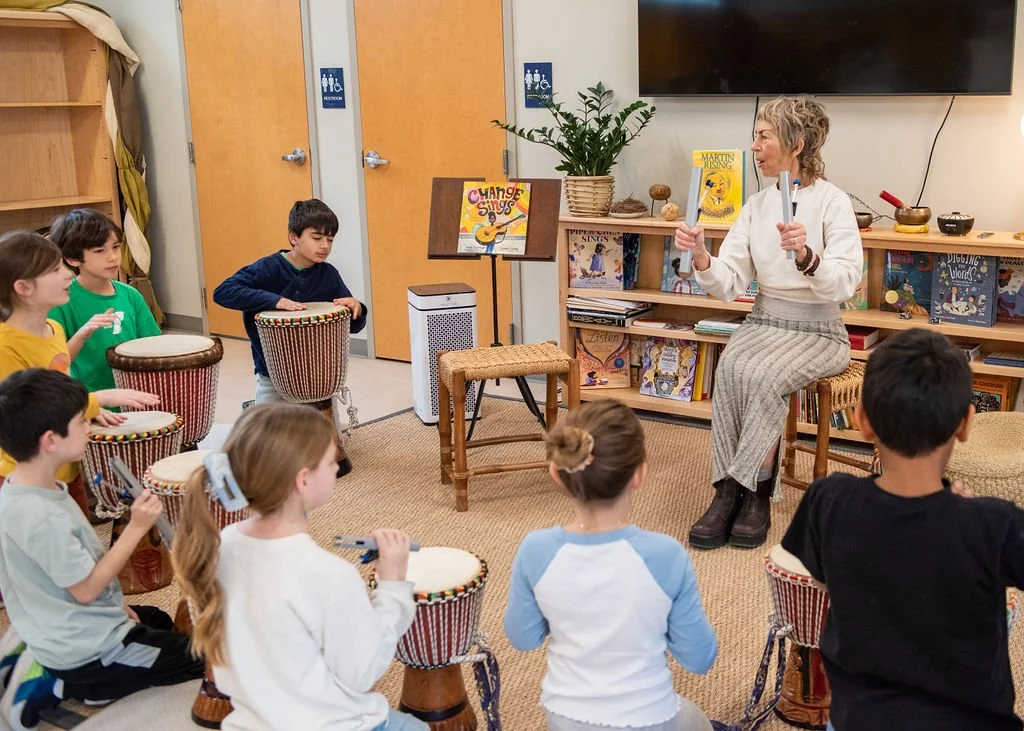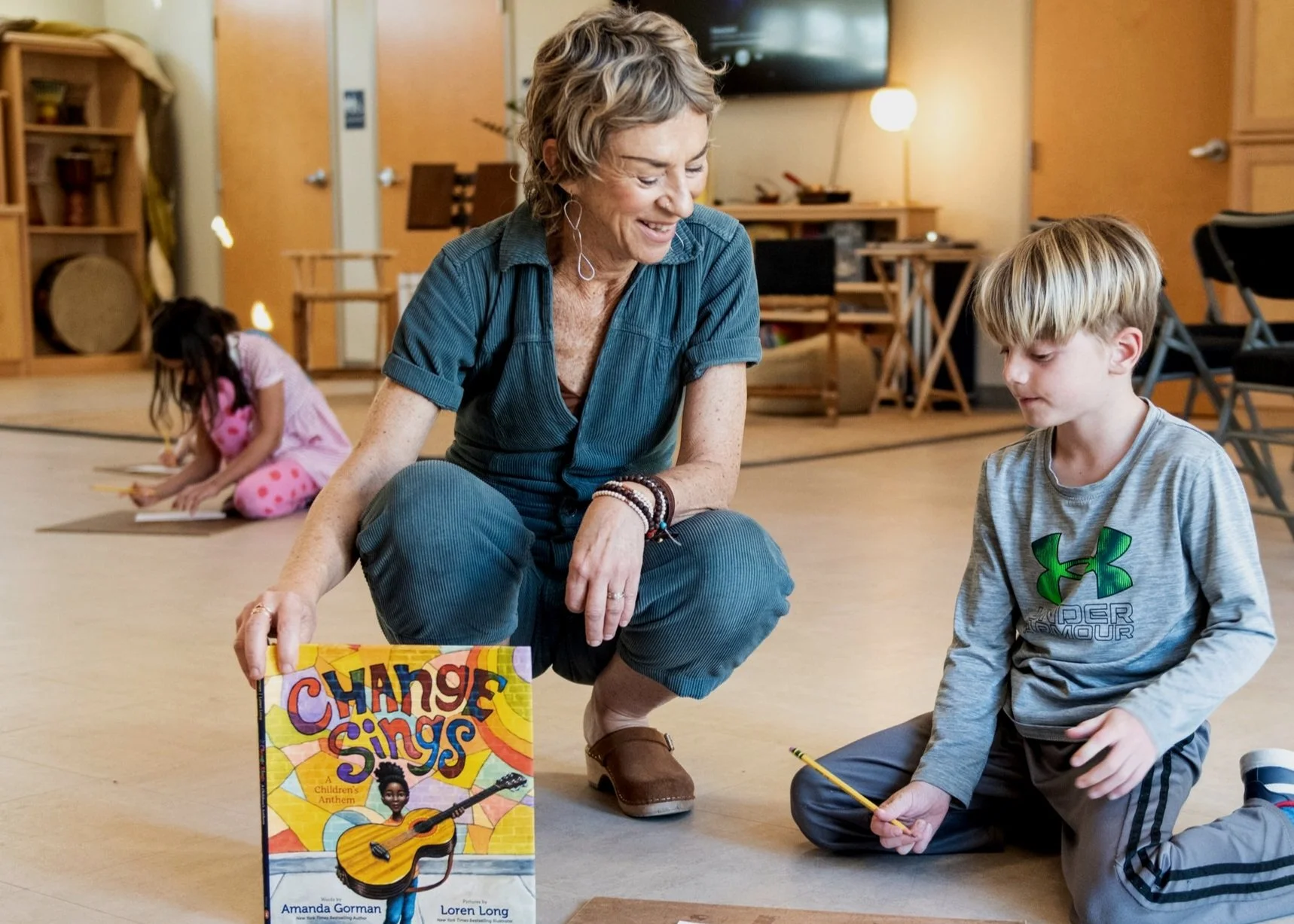
Lower Elementary
Lower Elementary children explore new, complex concepts through hands-on, experiential learning that ignites intellectual curiosity. Learning facts is not enough; teachers present engaging ideas to spark interest, inspire investigation, and prompt in-depth exploration of underlying processes and patterns that build inquisitive, analytical minds.
Children explore a web of ideas structured around a hub of lessons that help guide them toward a more abstract and nuanced level of understanding. These include core subjects like math, science, history and language, as well as a diverse curriculum of fine arts, music, Spanish and physical education.
Quick Facts
Ages
About 6 to 9 years
Classrooms
Two
Teachers
Four
Hours
8:10-8:30 a.m. drop-off; 3:30 p.m. pickup. After School is available until 5:30 p.m.
Curriculum
Mathematics
Children learn core concepts: addition, subtraction, multiplication, and division, basic math facts memorization. We also teach them geometry, fractions, decimals, and measurements, and show them how to problem-solve by sorting, organizing, and making diagrams and lists.
Language
We use a variety of strategies to practice and strengthen reading and comprehension. Students learn about parts of speech, do research and creative writing, engage in public speaking, and work on spelling through a phonics-based approach.
Culture
We build on the cultural subjects introduced in Children’s House so that they discover new relationships between different areas and learn to use information in new ways. A sample of topics includes geography, biology, zoology, and history.
Fine Arts
Children explore and develop creative problem-solving skills by using a wide variety of artistic tools, techniques, and media. Our goal is to encourage individualism and creativity, while also strengthening emotional development and perceptual ability.
Music
We seek to instill a joy of music in student. We do this by listening to many different types and genres, singing with them, playing instruments, and through movement and dance.
Physical Education
We continue to build the students’ enjoyment of movement and physical activity through activities that focus on motor skills, coordination, and overall fitness. We also introduce sportsmanship and competition using core Montessori principles like grace, courtesy, and respect.
“My friends and teachers are hardworking and respectful. I love doing science experiments and playing math games.”
— Lower Elementary student


